Thai diner menu
Welcome to a Thai diner menu and culinary journey like no other, where vibrant flavors and exotic spices come together to create a dining experience that tantalizes the taste buds and transports you to the bustling streets of Thailand. In this article, we delve into the distinctive offerings of a Thai diner menu, showcasing the diverse array of dishes that make it a standout choice for food enthusiasts seeking a taste of authentic Thai cuisine.
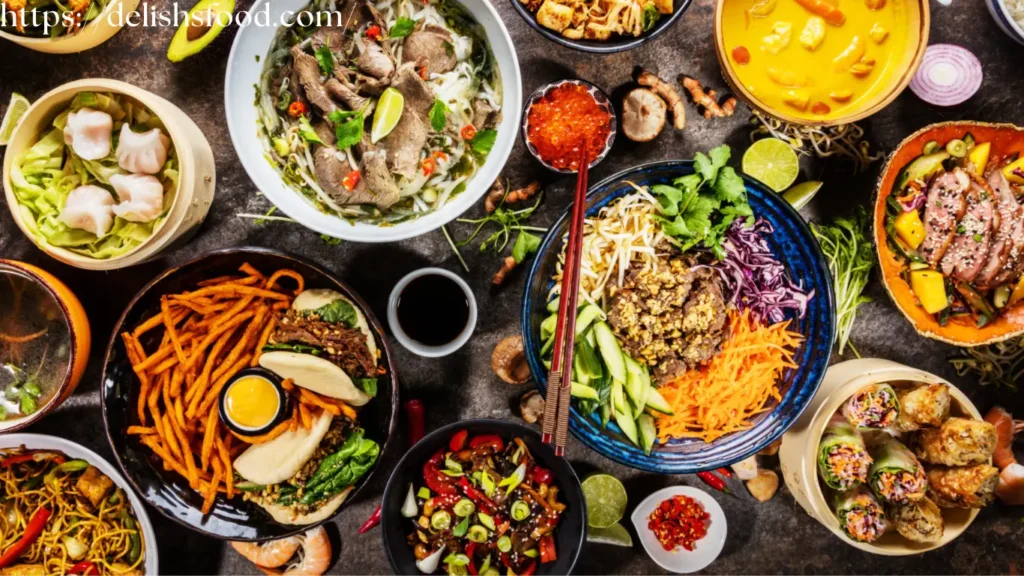
Why is Thai diner menu?
. Social Dining Experience: Dinner is often considered a time for social gatherings and leisurely meals with friends and family. Thai cuisine, emphasizing communal dining and shared dishes, is well-suited for these occasions. Ordering a variety of Thai dishes allows diners to sample and share different flavors and textures, enhancing the overall dining experience.
. Fresh Ingredients: Many Thai dishes feature fresh ingredients such as herbs, vegetables, and seafood, best enjoyed when prepared and served promptly. Dinner time allows restaurants to procure fresh ingredients for the day and offer dishes at their peak freshness and flavor.
. Rich and Flavorful Dishes: Thai cuisine is known for its bold and complex flavors, often achieved through aromatic herbs, spices, and sauces. Dinner provides a relaxed setting where diners can take the time to savor and appreciate the intricate flavors of Thai dishes, such as curries, stir-fries, and noodle soups.
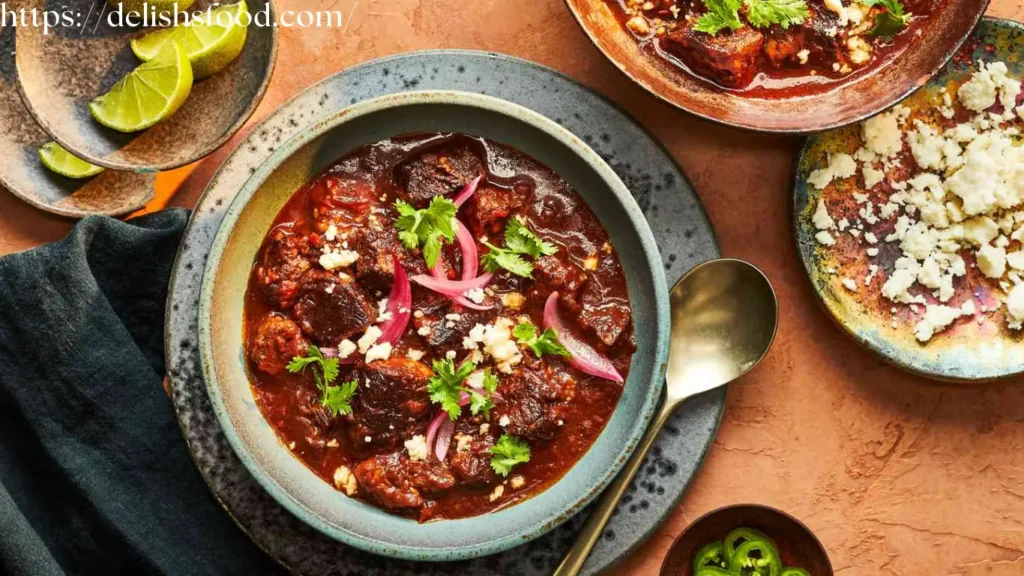
. Balanced Meals: Thai meals typically include a balance of flavors and food groups, incorporating elements of sweet, sour, salty, and spicy tastes along with proteins, carbohydrates, and vegetables. Dinner is an ideal time to enjoy a well-rounded Thai meal that satisfies both hunger and cravings for diverse flavors.
. End-of-Day Relaxation: Many people look forward to dinner as a time to unwind and enjoy a satisfying meal after a busy day. With its comforting and soul-nourishing dishes, Thai cuisine provides a perfect option for a relaxing dinner experience that soothes the senses and promotes well-being.
Thai diner menu
| Pad Thai | A classic stir-fried noodle dish with rice noodles, tofu, shrimp, or chicken, bean sprouts, peanuts, egg, and a sweet and tangy tamarind sauce. It’s often garnished with lime wedges and fresh cilantro. |
| Tom Yum Soup | A spicy and sour soup made with lemongrass, kaffir lime leaves, galangal, lime juice, fish sauce, and chili peppers. It usually contains shrimp (Tom Yum Goong), chicken (Tom Yum Gai), mushrooms, and other aromatics. |
| Green Curry | Thai cuisine is known for its bold and complex flavors, often achieved through aromatic herbs, spices, and sauces. Dinner provides a relaxed setting where diners can take the time to savor and appreciate the intricate flavors of Thai dishes, such as curries, stir-fries, and noodle soups. |
| Massaman Curry | A mild and aromatic curry with influences from Indian and Malay cuisine. It typically contains tender chunks of beef or chicken, potatoes, onions, peanuts, coconut milk, and Massaman curry paste, which includes spices like cinnamon, cardamom, and cloves. |
| Tom Kha Gai | A creamy and aromatic soup made with coconut milk, chicken, galangal, lemongrass, kaffir lime leaves, mushrooms, and Thai chili peppers. It has a delicate balance of sweet, sour, salty, and spicy flavors. |
| Som Tum (Green Papaya Salad) | A refreshing and spicy salad made with shredded green papaya, tomatoes, beans, peanuts, lime juice, fish sauce, and chili peppers. It’s often served with sticky rice and grilled meats. |
| Panang Curry | A thick, creamy curry with a slightly sweet and nutty flavor. It’s made with Panang curry paste, coconut milk, kaffir lime leaves, Thai basil, and your choice of protein, such as beef, chicken, or shrimp. |
| Pad Kra Pao | A stir-fry dish with minced meat (usually pork, chicken, or beef) cooked with Thai basil, garlic, chili peppers, soy sauce, and oyster sauce. It’s typically served with steamed rice and a fried egg on top. |
| Mango Sticky Rice | A popular Thai dessert made with sticky rice soaked in coconut milk, served with ripe mango slices, and topped with a drizzle of coconut cream and toasted sesame seeds. |
| Kao Soi | A Northern Thai dish of egg noodles in a creamy coconut curry broth, topped with crispy. |
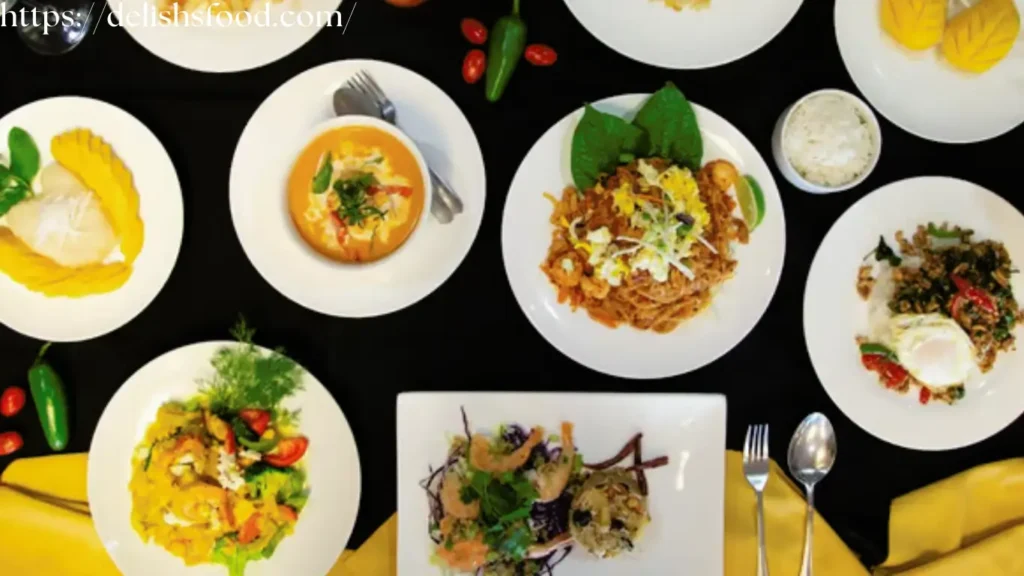
Unlocking the Essence of Thai Cuisine
Thai cuisine is renowned for its harmonious blend of sweet, sour, salty, and spicy flavors, as well as its emphasis on fresh ingredients and aromatic herbs. A Thai diner menu embodies this essence, offering a tantalizing selection of dishes that capture the spirit of Thai street food while providing a cozy and inviting dining atmosphere.
Exploring Signature Dishes
From aromatic curries to zesty salads and fragrant stir-fries, a Thai diner menu is a treasure trove of culinary delights. Sink your teeth into classics like Pad Thai, a flavorful stir-fried noodle dish tossed with tofu, shrimp, or chicken, and garnished with peanuts and lime. Or indulge in the rich and creamy flavors of Green Curry, made with coconut milk, green curry paste, and your choice of protein, simmered to perfection with Thai eggplant and basil leaves.
Unique Offerings Beyond the Ordinary
One of the highlights of a Thai diner menu is its offering of lesser-known delicacies that promise to surprise and delight even the most discerning palate. Sample the crispy goodness of Tod Mun Pla, Thai fish cakes infused with aromatic herbs and served with a tangy dipping sauce. Or savor the bold flavors of Larb Gai, a spicy minced chicken salad tossed with lime juice, fish sauce, and fresh herbs, offering a burst of freshness in every bite.

A Feast for the Senses
Beyond the delectable flavors, a Thai diner menu offers a feast for the senses with its vibrant colors, tantalizing aromas, and eye-catching presentation. Each dish is meticulously crafted to delight both the palate and the eyes, creating an unforgettable dining experience that leaves a lasting impression.
Embracing Diversity and Inclusivity
A Thai diner menu embraces diversity and inclusivity, offering options to suit every dietary preference and restriction. Whether you’re a meat lover, a seafood enthusiast, or a devoted vegetarian, there’s something for everyone to enjoy on the menu. From hearty meat dishes to light and refreshing salads, the menu caters to a wide range of tastes and preferences, ensuring that no one leaves the table unsatisfied.
Price idea
| Appetizers | Appetizers typically range from $5 to $15 USD per dish. This may include popular starters such as spring rolls, satay skewers, dumplings, or crispy tofu. |
| Main Courses | Main courses can vary in price depending on the type of protein (e.g., chicken, beef, seafood) and the complexity of the dish. Prices generally range from $10 to $25 USD per dish. Classic dishes like Pad Thai, curry dishes, stir-fries, and noodle soups are common options. |
| Curries | Thai curries are often priced similarly to other main courses, ranging from $12 to $20 USD. Prices may vary depending on the protein choice and whether it’s accompanied by rice or noodles. |
| Seafood Specialties | Seafood dishes, such as grilled fish, shrimp dishes, or seafood stir-fries, tend to be on the higher end of the price spectrum, ranging from $15 to $30 USD or more, depending on the type and quantity of seafood. |
| Vegetarian/Vegan Options | Vegetarian and vegan dishes are generally priced similarly to meat-based dishes, ranging from $10 to $20 USD per dish. These may include tofu stir-fries, vegetable curries, or noodle dishes. |
| Set Menus | Some restaurants offer set menus or combination platters that include a selection of appetizers, main courses, and desserts for a set price. These can range from $20 to $40 USD per person, depending on the number of courses and the restaurant’s pricing structure. |
| Desserts | Dessert options like mango sticky rice, coconut ice cream, or fried bananas are typically priced between $5 to $10 USD per serving. |
| Beverages | Prices for beverages such as Thai iced tea, fruit juices, beer, or wine can vary widely. Expect to pay anywhere from $3 to $10 USD per drink. |
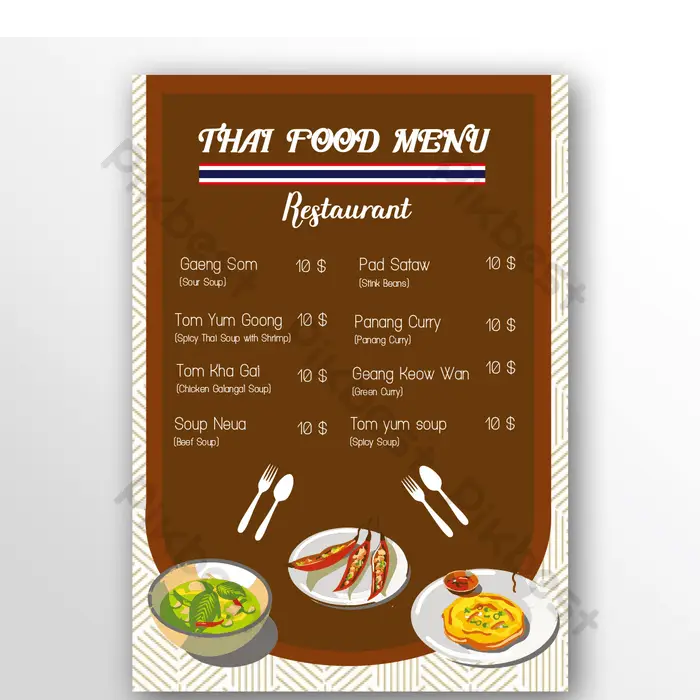
Serving style
| À la Carte | In this traditional serving style, diners choose individual dishes from the menu, which are then prepared and served separately. Each dish is priced individually, allowing diners to mix and match according to their preferences. |
| Family-Style | Family-style dining involves sharing several dishes among diners at the table. A selection of dishes, including appetizers, main courses, and sides, are ordered for the table to share. Diners serve themselves from the communal dishes, creating a convivial and interactive dining experience. |
| Set Menus | Some Thai restaurants offer set menus that feature a curated selection of dishes for a fixed price per person. Set menus often include a combination of appetizers, main courses, and desserts, providing diners with a well-rounded dining experience and allowing them to sample a variety of flavors. |
| Buffet | : Buffet-style dining allows diners to serve themselves from a selection of dishes laid out on a buffet table. Thai dinner buffets may feature a wide range of appetizers, main courses, sides, and desserts, giving diners the opportunity to sample a diverse array of dishes at their own pace. |
| Tasting Menu | Tasting menus are a more upscale and curated dining experience, offering a multi-course meal featuring small portions of signature dishes and chef’s specialties. Diners are often presented with a series of dishes chosen by the chef, allowing them to experience a range of flavors and culinary techniques. |
| Chef’s Table | For a more exclusive and intimate dining experience, some Thai restaurants offer a chef’s table option where diners are seated at a special table in or near the kitchen. The chef personally prepares and presents a customized menu for the diners, offering a unique opportunity to interact with the culinary team and sample off-menu creations. |

recipe
Pad Thai Recipe:
Ingredients:
- 8 oz (225g) dried rice noodles
- 2 tablespoons vegetable oil
- 2 cloves garlic, minced
- 8 oz (225g) shrimp, peeled and deveined
- 2 eggs, lightly beaten
- 2 cups bean sprouts
- 4 green onions, thinly sliced
- 1/4 cup roasted peanuts, chopped
- Lime wedges, for serving
- Chopped cilantro, for garnish
For the Sauce
- 3 tablespoons tamarind paste
- 3 tablespoons fish sauce
- 2 tablespoons palm sugar (or brown sugar)
- 1 tablespoon soy sauce
- 1 teaspoon chili flakes (adjust to taste)
Important Instructions
- Prepare the Rice Noodles:
- Place the dried rice noodles in a large bowl and cover them with hot water. Let them soak for about 30 minutes, or until they are soft but still slightly firm. Drain and set aside.
- Make the Sauce:
- In a small bowl, whisk together the tamarind paste, fish sauce, palm sugar, soy sauce, and chili flakes until well combined. Adjust the sweetness or spiciness according to your taste preference.
- Cook the Shrimp:
- Heat 1 tablespoon of vegetable oil in a large skillet or wok over medium-high heat. Add the minced garlic and sauté for about 30 seconds, until fragrant.
- Add the peeled and deveined shrimp to the skillet and cook for 2-3 minutes on each side, until they are pink and cooked through. Remove the shrimp from the skillet and set aside.
Scramble the Eggs
- In the same skillet, add the beaten eggs and cook, stirring gently, until they are just set. Push the eggs to one side of the skillet.
- Cook the Noodles:
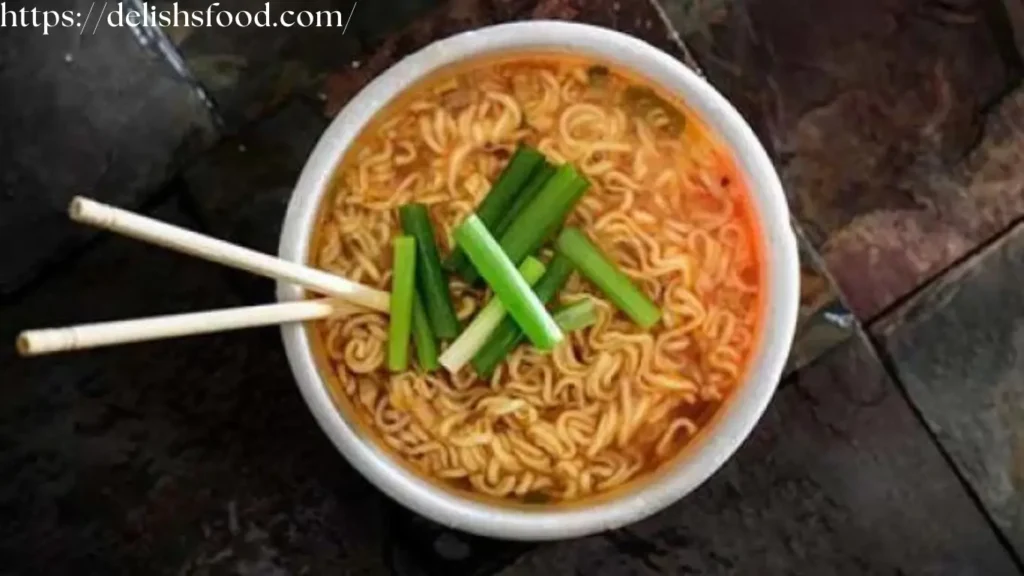
- Add the remaining tablespoon of vegetable oil to the skillet. Add the soaked rice noodles and stir-fry for 2-3 minutes, until they are heated through and well coated with the oil.
- Combine Everything:
- Pour the prepared sauce over the noodles in the skillet. Toss to coat the noodles evenly with the sauce.
- Add the cooked shrimp back to the skillet, along with the bean sprouts and sliced green onions. Toss everything together and cook for another 1-2 minutes, until the bean sprouts are slightly wilted.
Serve
- Transfer the Pad Thai to serving plates or a platter. Garnish with chopped roasted peanuts and chopped cilantro.
- Serve immediately with lime wedges on the side.
Enjoy this homemade Pad Thai, bursting with authentic flavors and ready to delight your taste buds with every bite!
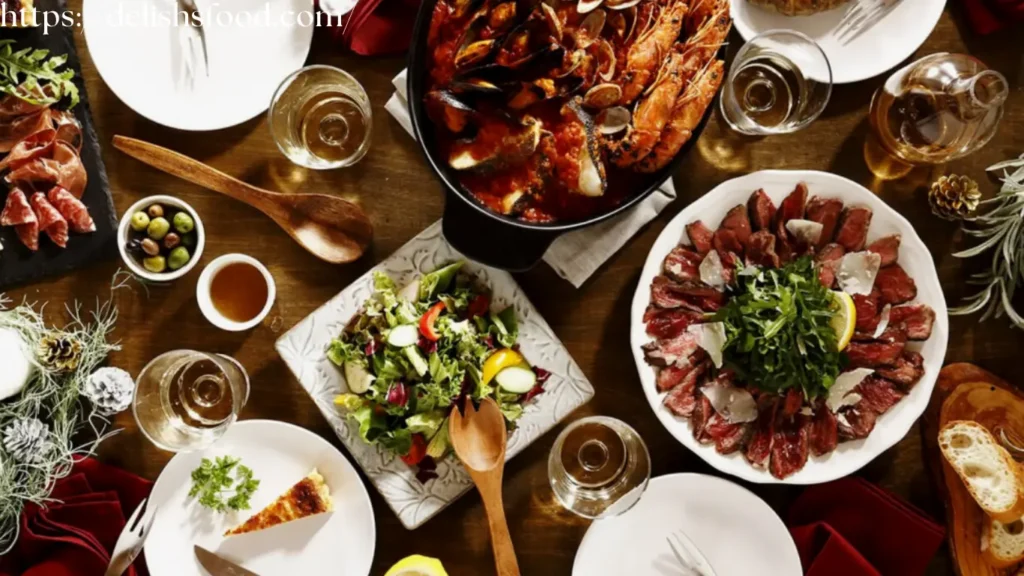
Prons
- Reduces Inflammation.
- Stronger Immune System.
- Better Functioning Digestive System.
- Thai food: More Than A Delicious Dish.
Cons
some Thai dishes have a lot more calories and fat than you might expect
FAQS
Thai food is packed with vitamins, minerals, and other essential nutrients.
Complex Flavors
use of contrasting flavors.
conclusion
In conclusion, A Thai diner menu is a culinary adventure waiting to be explored, offering a tantalizing array of dishes that celebrate the rich and diverse flavors of Thai cuisine. From signature classics to unique delicacies, each dish tells a story of tradition, innovation, and culinary mastery. So why wait? Embark on a gastronomic journey today and discover the delights of a Thai diner menu for yourself.




